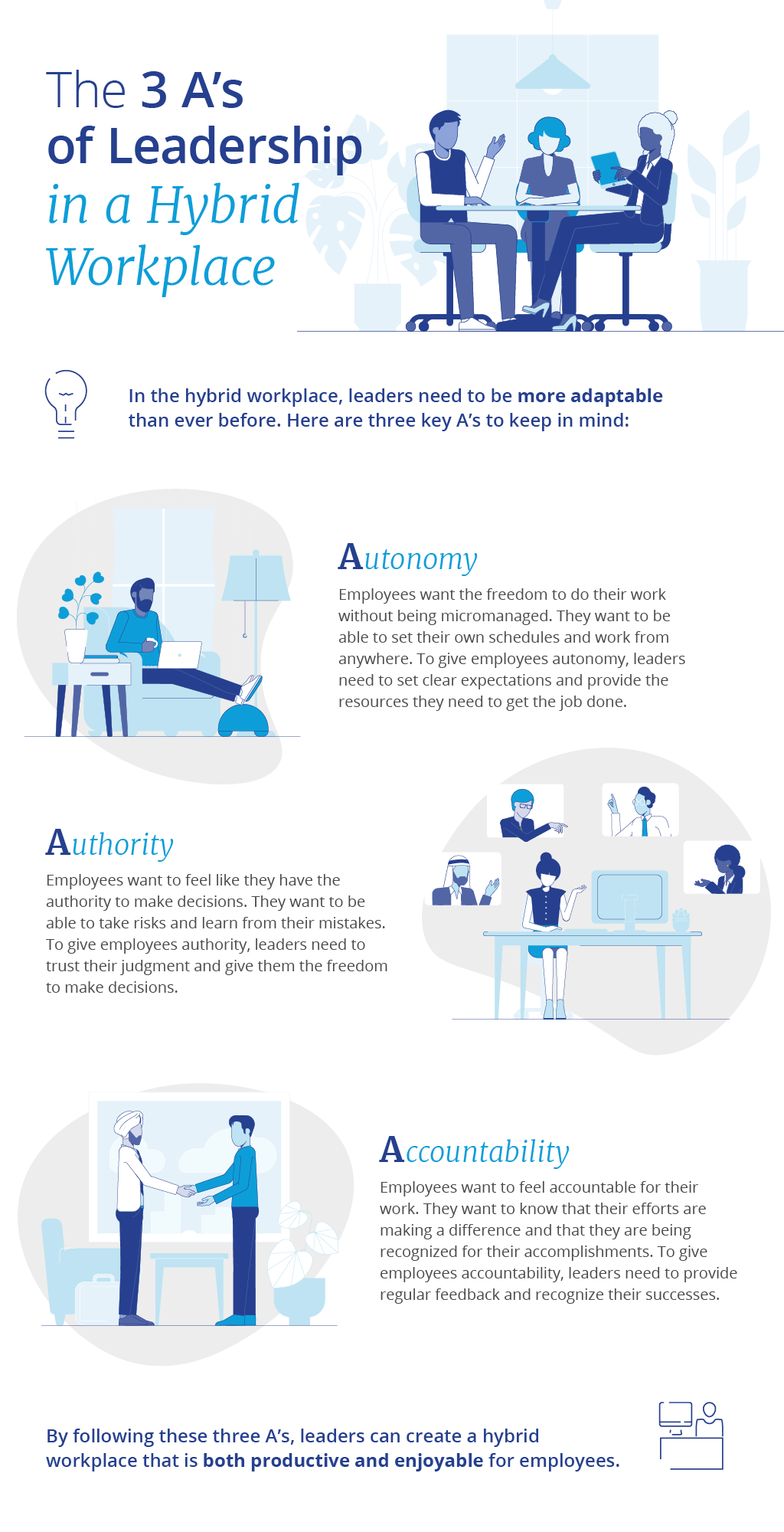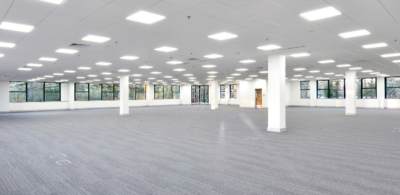The Office Is Core to Building Trust and Developing a Sustainable Leadership Model
We are still envisioning what the next iteration of the office will look and feel like to support a healthy work culture. During this state of uncertainty and constant change, many companies are faced with challenges to create an impactful return to work experience as noted in a recent paper published by our Workplace Advisory practice.
The roadblocks and opportunities to improve effective use of the office are vital to its success. In addition to core improvements to the office space, there are key leadership traits that are important to increase engagement, utilization, and provide an attractive workplace experience.
Building Trust in the Workplace: The Importance of Face-to-Face Interactions
According to research conducted by MIT’s Human Dynamics Lab, face-to-face requests of any sort are 34 times more effective than those sent by email, and a physical handshake promotes cooperation and influences negotiation outcomes for the better.
In today’s hybrid work environment, building trust between colleagues has become a challenge. Trust is the foundation of any relationship, and in the workplace, it plays a critical role in collaboration, innovation, and productivity. The question is, how can we build trust in the workplace when we are not physically present with our colleagues each day?
I recently had a great conversation on this topic with Kringle Ho, our Growth Marketing Manager at Colliers. She and I first met in Chicago last year at the CoreNet Global Summit. It was that face-to-face meeting that spurred our now weekly mentorship sessions, where we explore a wide range of topics relating to the future of work, commercial real estate, and more.
During our conversation, Kringle pointed out that trust is a fundamental element of employee engagement. When employees trust each other, they feel comfortable sharing their ideas, taking risks, and collaborating on new projects. It is the baseline of having someone’s best interests in mind that leads to innovation and productivity.
The Role of Strong Professional Networks
We also discussed the strength of the professional networks our employees develop as a critical factor in building trust in the workplace. These networks, whether formal or informal, are essential in fostering relationships and trust which lead to improved engagement and productivity.
The great resignation made it challenging to get to know the people that you rely on in a meaningful way each day. With upwards of one-third of the workforce turning over in most companies, the ability to get to know new colleagues in a purely virtual environment is strained and at times lost.
The pandemic has forced organizations to adapt and, in many cases, radically transform the way they work, adding even more complexity to building trust.
At least 70% of communication is non-verbal. Although digital platforms have helped us bridge the communication divide, they do not make up for the power of meeting in person. The office is the foundation for building trust with your employees. Businesses that prioritize developing networks and building trust between their team members will create a more positive work environment, increased employee engagement, innovation, and ultimately, business success.
The Three A’s of Leadership in a Hybrid Workplace
Kringle, also noted the importance of adapting your leadership style when developing a hybrid work environment, “My personal experience has guided me to adopt what I call a triple-A approach, a framework that relies on providing: autonomy, authority, and accountability.”
Employees want the autonomy to perform without being micromanaged, the authority to make decisions, and seek accountability for their results. Ensuring we reward and recognize employees for their accomplishments also provides motivation and encourages them to continue to work hard.
Ultimately, good leaders adapt their leadership style to ensure they are supporting an engaged workforce. The great resignation emphasized some key reasons why employees sought greener pastures to evolve their careers. Key among them was greater flexibility for work-life balance and the ability to create their own schedule between working remotely or in the office. To attract and retain the best talent, adopting a triple-A approach aligns well with the personal goals that most of the post-pandemic workforce desires.
Culture Dictates Effective Leadership
According to research by Deloitte, 82% of people believe that culture is a potential competitive advantage, and 94% of entrepreneurs and 88% of job seekers say that healthy work culture is vital for success.
Developing and cultivating a positive workplace culture is imperative to effective leadership.
The values an organization creates should be the lens through which decisions are made. A leader who gives employees the autonomy to make decisions while focusing on values as the north star to guide their choices, creates a strong framework for a transparent and collaborative environment. Leaders who consistently apply their values to their decision-making process find they are sought after by the best employees.

 Chris Zlocki
Chris Zlocki


 Martin Woodrow
Martin Woodrow
 Aaron Jodka
Aaron Jodka
 Andrew Steele
Andrew Steele